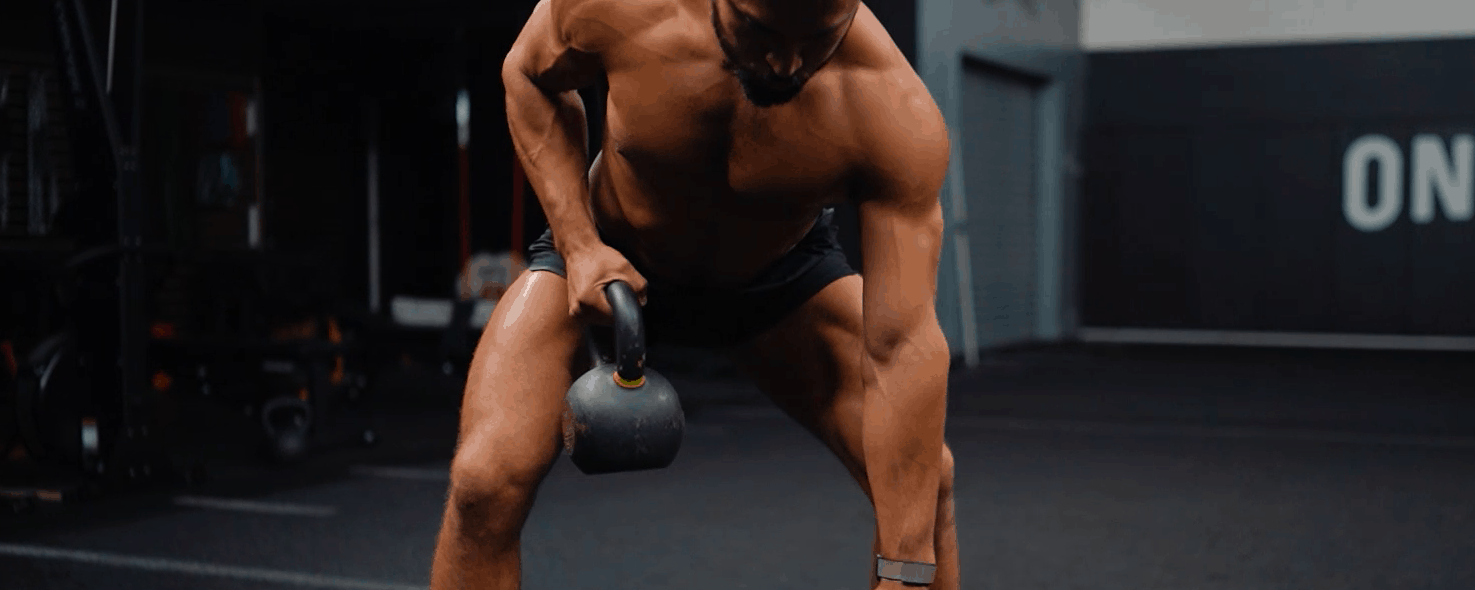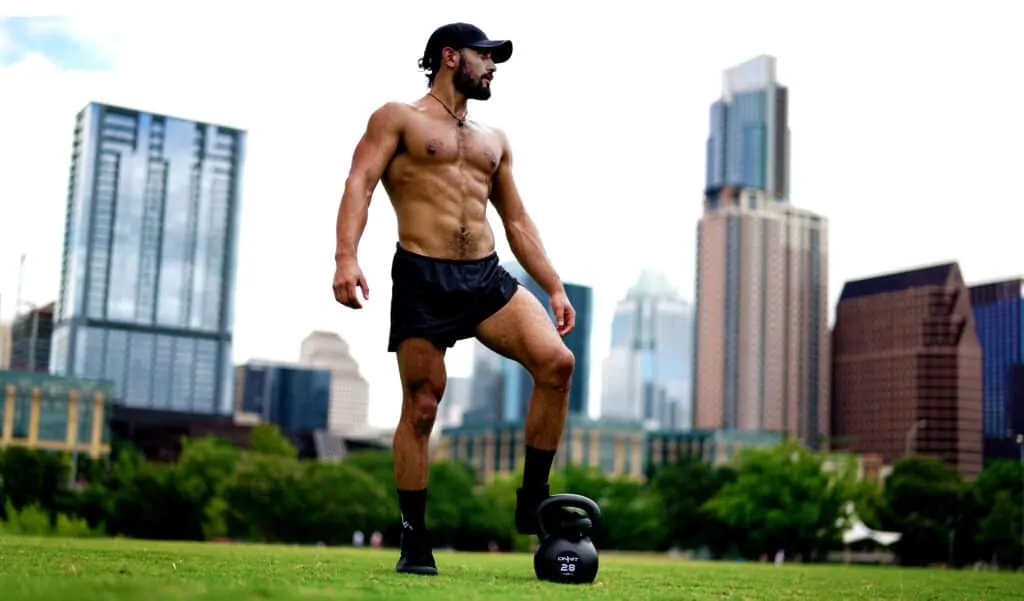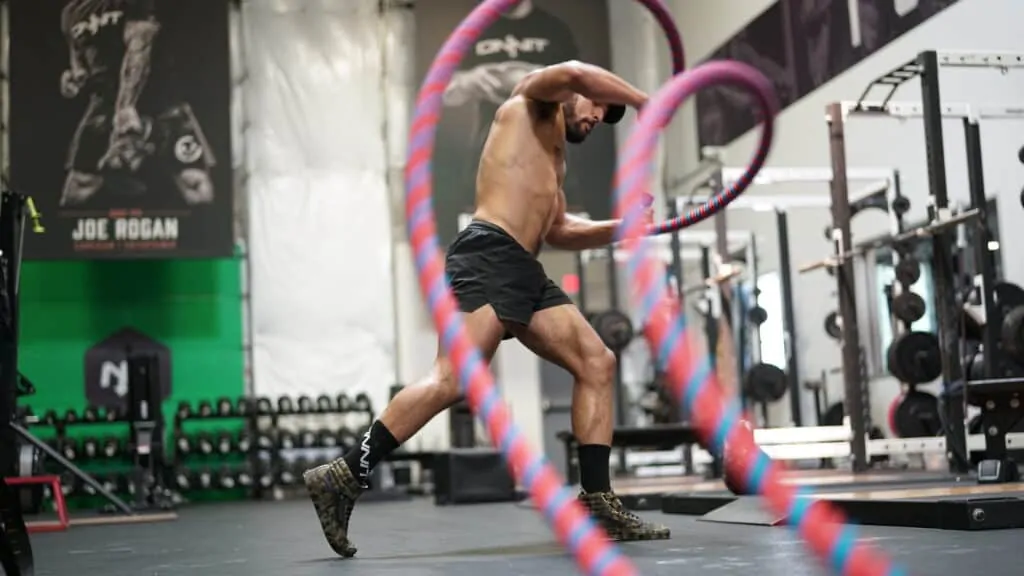
Typically, getting started is always the hardest part when it comes to accomplishing anything.
From writing your grocery list to planning an epic event, figuring out where to begin and what to do first is the first hurdle to clear.
The same is true when it comes to developing a workout regime; you may know you want to start, but how and where do you even begin? And how much should you even be working out to see results?
I like to start with the following questions to help give you an idea of a starting point:
- How much time do you have to commit each day or week to a workout?
- What is your current fitness level?
- Do you have any injuries you need to work around?
- How much experience do you have in the gym?
- What are your goals?
That final question, ironically, is the best place to start. Just like every other to-do required for a healthy, productive, strong life, you need a well-defined fitness goal. A goal and knowing why you’re doing what you’re doing, is key for a few reasons:
• You can hold yourself accountable. Goals are met by taking a series of steps toward an end product. You know health and fitness are lifelong, practices, not an overnight fix. So, each day, you’ve got your workout or fitness task on your schedule; it’s up to you to be accountable to complete the task and check it off your list.
• You can track progress. Particularly with fitness goals, you can measure differences between weight losses, strength gains, endurances wins, the completion of a competition and more. All you need is a journal and a pencil to jot down what you did for the day and at what duration, weight, rep and/or stamina. I prefer the notebook and pen route, but there are a ton of great apps to track your workout progress, too.
• You can create a plan. A fitness plan is always critical to success, because of the aforementioned reasons — accountability and having the information available to measure where you came from and how close you are to where you want to be — as well as the fact that they give you direction and purpose. You have concrete steps to keep your progress moving forward so that you reach your goal by a specific time.
Fitness Goals

To each his own, right? Whatever reason you have for grinding through a workout is yours and yours alone. But there are a few popular reasons people want to begin a workout regimen, and those include:
- General fitness/disease prevention
- Weight loss
- Increase strength
- Build muscle
- Improve conditioning/stamina
- Increase athletic prowess for a specific sport or activity
- Increase flexibility/mobility
- Training to participate in a specific activity
So now, go ahead, ask yourself, what is your fitness goal? Why do you workout? In the end, what is it that you want to get out of your time spent in the gym? And now that you know, let’s look at the best types of workouts for a few of the most common goals and how often you should be doing them to achieve that specific goal.
General Fitness
According to the research, the average adult requires about 20 minutes of moderate aerobic activity per day. This means for at least a 20-minute period each day, you get your heart to between 40 and 85% of its maximum rate.
Aerobic exercises look like:
- Walking at a high intensity
- Jogging
- Burpees (in sets)
- Jumping rope (in sets)
Combining this with strength training 3-4 times per week completes a well-rounded regime.
You guys know I’m a fan of kettlebells, but using a similar weight for each exercise that will tax the muscle you are working after 12 to 15 reps is sufficient. A full-body workout could be as simple as three sets of:
- Bench press
- Squats
- Lat pulldowns
- Leg curls
- Shoulder press
If you aren’t ready to include weights, you could try this full-body weight-free workout, which I demo on my YouTube page. It’s full of everything from Side Kick Throughs to Bridges to Squats to Broad Jumps, and, no doubt, you’ll get both a strength and cardio workout in one.
Weight Loss

Working out for weight loss requires variety, especially when you start reaching plateaus. This is because your body adapts to the work your giving it and, even though you’re burning the same amount of calories, it becomes more efficient at using those calories – and it’s here you’ll need to shake things up.
This is why I’m a fan of HIIT and interval-style training, because the moves are constantly varying and challenging, which encourages your body to keep shredding.
That said, a good weekly breakdown of working out to lose weight:
* Two days per week: Walk and/or run, getting your heart rate to an aerobic state, paired with a full-body workout. Here, you can use the same full-body workout recommendation as noted in the General Fitness section, or you can hit up a 60-minute Power Vinyasa yoga class, which will challenge your strength while increasing your flexibility.
* Two to three days per week: Challenge yourself with a HIIT workout. HIIT — short for High Intensity Interval Training — is a killer way to touch on everything: variety, cardio work and strength work.
Increase Strength
Increasing strength results from dedicated time in the weight room — at least two days per week, according to research. However, as you advance from beginner, when you’re getting a full-body hit each time you’re in the weight room, the number of days you’re there needs to advance, too, increasing to four or five days.
Then, as your number of workout days per week increases, the structure of your workout also needs to intensify, meaning you may need to start alternating pairing muscle groups for each gym session, rather than working the entire body every time.
For example, one day’s workout could be back and chest, another hamstrings and quads, and another day triceps and biceps — as working opposing muscle groups in a single day is generally a good idea and is called an antagonistic superset.
Finally, regardless of the number of weight days your workout regimen calls for, you need to include cardio, to work your heart and keep your gains lean, and flexibility, to ensure your newly swole muscles stay mobile.
Increase Flexibility/Mobility

According to a studies, you should be stretching all major muscle groups two to three times per week. Start your day with a good full-body stretch, holding each pose for a total of 60 seconds, which means you can stretch one side for 30 seconds, move to the other for 30, and then complete the minute by switching sides again. Or, you can just keep working through a pose for a full 60 seconds. You can also try a Tai Chi or restorative yoga class. Both allow you to expand your mobility while challenging your mindfulness.
My advice is if you’re a beginner, start small with a couple days of full-body strength training workouts per week, paired with a couple longer cardio sessions and work up. Foundation is everything, so don’t feel like you need to be diving into everything all at once. Mindful and steady wins this race!
Hi there.
Thanks so much for the advice! It was helpful. I have been out of the gym for the last 8 months. I’m just starting to get back on track. Prior to that, I was in gym about 4 times a week for a few years, mostly strength training. I would say I have gained about 15Lbs, ugh. It’s a lot on me since I’m only 5ft. With that, I feel like I’m bran new and very impatient. Not sure if I should be doing full body weight training or pairing muscles. But I’m hitting the cardio a couple days which I have to force myself. Ur legs are off the hook! How many days do I train them? Do u think I would be over working if I trained twice a week? Maybe heavy one day and low weight/high reps a few days later? Anyways, just saying hi and I like ur Kettlebell W/O
Christina, thank you for your support and for reaching out to me! I would recommend going doing 2 lower body days per week. I would also recommend checking out my daily workouts. It’s only 14.99/month and I have great lower body workouts there, including my hypertrophy days that will crush those legs! I recommend hitting at least some light cardio everyday, a jog, run, bike ride, sprints, etc. This will also help with your legs while pairing it with my daily workouts. The workouts also include a decompression which will help prevent you from being too sore the next day and help you keep up with your workouts! I hope this helps you to start crushing your fitness goals and get you back on a routine to get that body you want! let’s get it!
Great article as usual. Thanks Eric
What would you recommend after the 8-Week Single Kettle Bell program? I’ve enjoyed it so far and want to keep the progress going. Up the kettle bells weight or is there a different program you’d recommend for a change up? Thanks!
Ryan, I’m glad to hear you’ve enjoyed the Single KB Program and I hope you saw some good gains from it. My first recommendation would be to go back through the program and since you know what it’s all about, to really challenge yourself with it by adding weight and/or extra sets to it! If you’re not interested in re-doing it then I would say go ahead and check out my daily workouts, I program them to really test you and see optimal gains! I also have a 12-week bulking program coming out really soon if that’s something that would interest you. If it is I would do that when it comes out and then hit the 8-week shredded program to get you summer ready! Thank you so much for all your support and I hope this is useful info. for you! Let’s get these gains!!!!
Thanks for your reply, Eric! I’ve definitely enjoyed the program and can’t wait to try out your other recommendations.
Ryan, of course, always here to help!
If you only had three days to dedicate to strength training, how would you do it? I was think one day focusing on the upper body, one day for the lower, then one full body day. Getting back into Muay Thai seriously and trying to be efficient as possible with the time I want to prioritize.
Ryan, I think that’s a great idea. Muay Thai is an excellent resource with lots of great strength training exercises!
Hi Eric, I’m doing the 8 week single Kettlebell course and absolutely loving it! 5 weeks in and seeing amazing gains already. Really love the mobility as well.
Starting in week 5/6 I see 6 days of workouts in a row. So no active recovery after 2 or 3 days. Do you recommend to include these yourself if you happen to really sore after 3 days? Personally even mobility days kick my ass so no workout really feels easy so 6 in a row feels too much. Advice would be most appreciated!
One other question if I may: I also wonder how often (or if) you recommend 8k runs. Could I do this on the side as often as I want or would you recommend not doing them after leg days for instance to give the legs the well needed rest?
Pimvan, Thanks for reaching out man! Definitely go at your own pace and don’t overwork yourself to where you get injured. If running is something you enjoy and want to train for a race I would suggest working that into your regime so you can do both. Post progress & tag me!